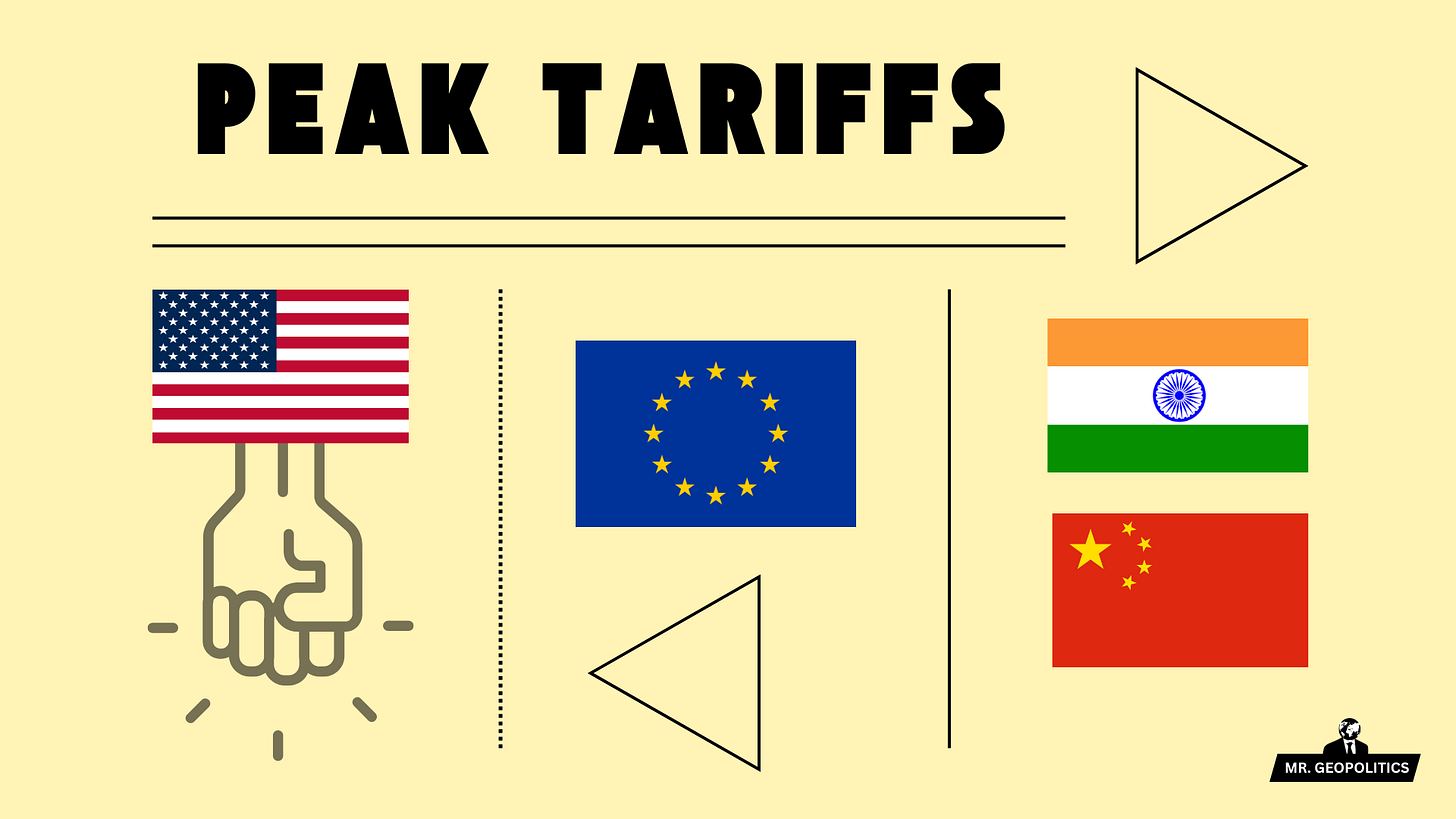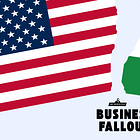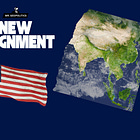A tariff blitzkrieg is underway again, as the US strangely preempts its own August 1 deadline, slapping levies on Brazil (50% tariffs), South Korea (15% as part of a new trade deal), threatens India (25% tariffs), and warns Canada it could face trade derailment if it recognizes Palestine, as Ottawa follows the direction France and the United Kingdom are moving in.
In tandem, the “geopolitical freeze” (or trade truce) between the US and China will expire on August 12, threatening to cause the economic walls that were raised by both sides after Liberation Day (April), but later brought down, to shoot back up. The latest US-China talks in Stockholm, aimed at extending the truce, have failed to yield any concrete results.
📣 POPULAR INSIGHTS ON THIS TOPIC
Each of these situations, or arenas, is a rabbit hole, reflecting the new fluidity and unpredictability of geopolitics. Stakeholders must spend time understanding where each of these battles could lead to, in particular, the US-China economic war, which tariffs are only one part of.
However, surrounding the latest tariff push, and the August 1 deadline, is a separate matter.
The US under President Donald Trump is using tariffs to have its way across the globe. Either tariffs are being weaponized, as seen in the threat of 100% duties on India, Brazil, and China if they continue to trade with Russia after the 10-day window expires. Or, tariffs are being normalized, like Vietnamese exports to the US facing a 20% tariff as part of the trade deal, or European exports to the US being subject to a 15% charge.
Wielding any tool, resource, or law too much diminishes its power. Eventually, tariffs will lose their effectiveness, their ability to control the behavior of states, and America will have to go beyond this kind of geoeconomics. Considering the reactions of India, Brazil, and China to Trump’s Russia ultimatum, the point where nations brush off tariff threats could be closer than most realize.
This means that the world is approaching or is in the midst of “Peak Tariffs,” when tariffs have the most power and effect in the world. The coming period could see tariffs being defied or countries being unmoved by America’s most popular (and overused) trade action.
Peak tariffs are about two main realities: tariffs and the pressure they exert may be about to rise exponentially, as Trump pushes down the gas pedal to its limit - the peak, and in tandem, the moment peak tariffs are reached, likely in the following months, the focus will turn to “post tariffs” - what America does to influence and lead beyond trade levies.
PEAK INDICATORS
The current sparring between the US and India, where Trump referred to the Indian (and Russian) economies as “dead economies” on social media, and said that the US does very little business with India, represents the most significant sign that tariffs are no longer having their intended effect.
The coming days are crucial.
The most unlikely scenario: Russia pauses fighting, and its key trade partners publicly take steps to diversify their commodity security, enabling everyone to save face and allowing Trump to hold back the (up to) 100% secondary sanctions.
However, what is more likely is a real fight, one that will change America’s relationship with strategic players like India, as Russia refuses to budge, and from Brasilia to Beijing, new powers continue buying Russian goods. If the latter occurs, a rising probability, it means that Trump’s tariff threat carries little weight for emerging economic superpowers.
Behind this is a shift in outlook that should ring alarm bells in Washington: trade with America is not as significant as it once was.
However, Trump’s romance with tariffs will make ditching trade taxes difficult in the short term. This will force a “reinvention” of how America uses tariffs. One possibility is “G7 tariffs.” Instead of the US leveraging the American economy (i.e., Indian goods sent to the US market hit with levies), Washington might try to involve the West. The US could propose “G7 tariffs,” levies across the Western world, that punish certain states, attempting to reconnect Western capitals, and using US security guarantees as leverage.
Another sign of peak tariffs is the cavalier approach that China is taking towards the US. Beijing is in a powerful position, as in the first round of the US-China economic war, the Chinese have been victorious.
New sources of tension are forming, like China demanding that Nvidia explain how “secure” certain AI chips are, as Washington calls for its advanced semiconductors to be embedded with equipment that allows them to be tracked, creating ideas that the US has “control” over technology goods it sells abroad.
Equally important is that America’s tariffs have not broken China’s export model, as China reports that its trade export volume has increased 5.8% compared to a year ago, even with US tariffs. And while Chinese exports to the US are declining, China is redirecting flows to other regions. In the first half of 2025, Chinese exports to Southeast Asia were up 13%, exports to India were up 14%, and exports to Africa were up 21%. And China is doubling down on the new trade status quo, as Beijing announces that tariffs will be eliminated on almost all trade with Africa. Strangely, without saying it, China is now decoupling from America as it adapts to the new geopolitical and geoeconomic reality.
The US tariff threats have not forced China into submission.
POST-TARIFFS*
(“Post-tariffs is a concept/expression of Abishur Prakash/Mr. Geopolitics)
Acknowledgement and acceptance of peak tariffs will prompt capitals and boards to ponder what comes next. Ideas like G7 tariffs will take time to form, if they have any life. Wondering what comes next is not just about what America does, but also about the rest of the world.
In both the India-Pakistan war and the Cambodia-Thailand war, the US employed trade to pressure sides into a ceasefire. But if countries are already locked in a trade war with America, or if US tariffs fail to shake governments, America’s ability to control hostilities erodes, meaning the next flashpoints could rage even with US intervention (mimicking the state of play in Ukraine or Gaza).
The starting point of America’s post-tariff thinking could be to strengthen export controls, go after investment flows, or once again entertain ideas like global aid to take on competing states from a different angle. Of course, these actions are nothing compared to the bigger and more significant actions America could take as tariffs lose their bite.
What is emerging, then, is the rise of a post-tariff world where the US has to utilize different geoeconomic tools to control the behavior of nations and continue calling the shots. However, in a strange paradox, the post-tariff world will not be a holistic environment. Only the US will be in the “post-tariff” phase, as it has been the main economy to use this economic tool. Many in the Global South, at the beginning of a new development phase, could adopt tariffs down the line, creating incongruences in the global economy.
Conclusion
How close or far the world is from peak tariffs aside, the shockwaves of what has been taking place since January are far from over.
The 50% tariffs on certain kinds of copper imports, like pipes, position the US against Peru and Chile, two of the world’s largest copper exporters. This expands the distance between the US and South America as a whole, considering Colombia is preparing to leave NATO as a partner nation, and Brazil is clashing with the US on the issue of domestic politics. Even if America does another U-turn and does away with the copper tariffs, these relationships have fundamentally changed.
What is forming is a collision, a convergence, between the pre-tariff world, the peak-tariff world, and the post-tariff world. The already complicated geopolitics that many are navigating has just become even more complicated.
Within all this is a lesson for the next set of states entertaining economic nationalism.
Certain doors have remained shut for a reason. Once they are opened, short-term gains could be quickly wiped away and overshadowed by long-term pain that seems to snowball no matter what anyone does.
-ABISHUR PRAKASH AKA “MR. GEOPOLITICS”
Mr. Geopolitics is the property of Abishur Prakash/The Geopolitical Business, Inc., and is protected under Canadian Copyright Law. This includes, but is not limited to: ideas, perspectives, expressions, concepts, etc. Any use of the insights, including sharing or interpretation, partly or wholly, requires explicit written permission.
Have questions or thoughts? Let’s talk: mrgeopolitics@substack.com
If you like Mr. Geopolitics, your colleagues might too.
Feel like doing something unique for somebody important?








